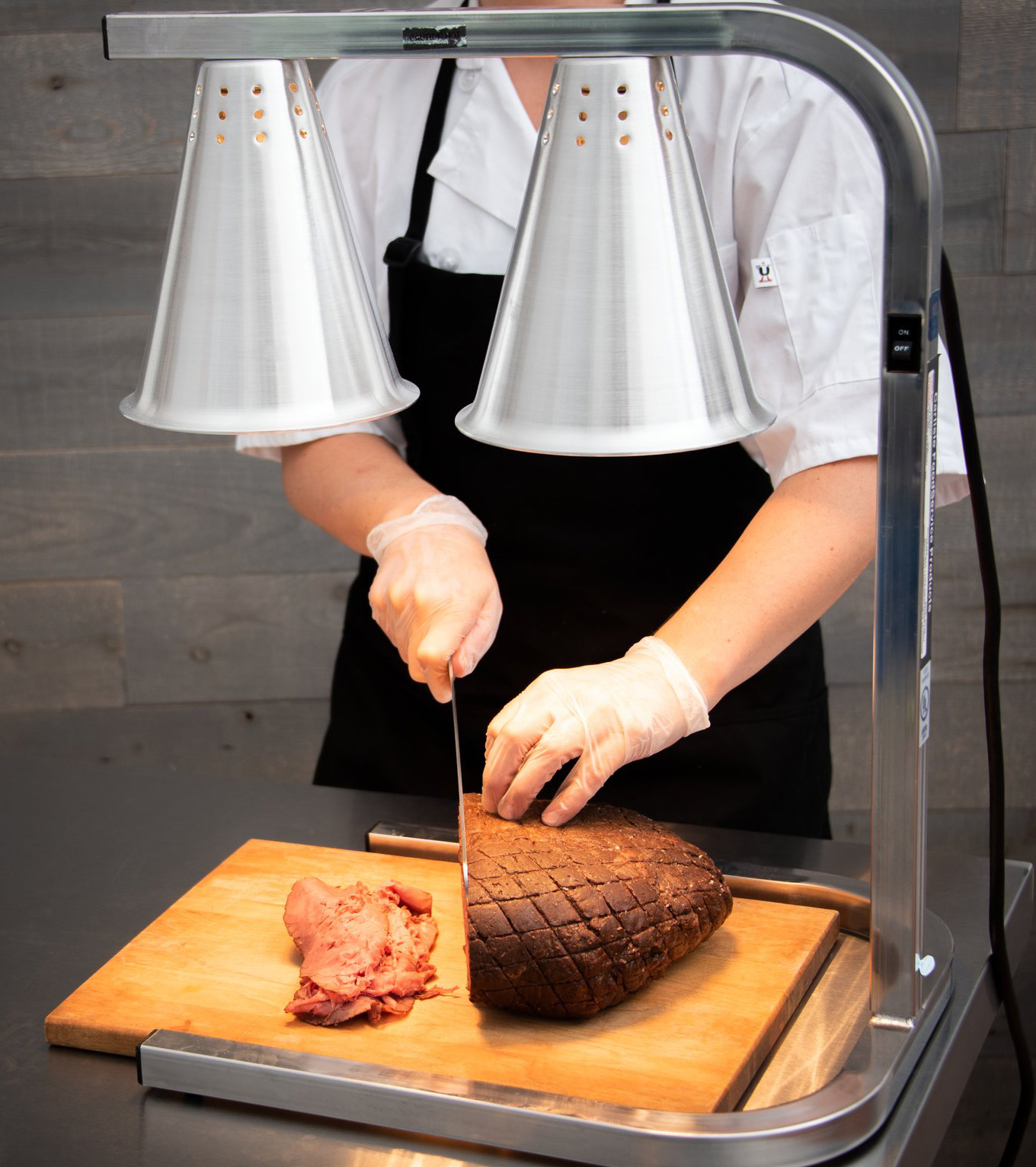Symptom Solving vs. Problem Solving
I began strolling towards the front door of a waterfront restaurant, already in operation for years, at about 10 minutes before my meeting was scheduled to start. Like clockwork, all of the design team members started to file in and our meeting began at 10:00am sharp. We initiated the get-together with an introduction of the team members and quick review of initial concept drawings and renderings that had been completed to date. Several conversations ensued, as did questions regarding the design. We broke from the initial part of our session and began to walk the facility as part of our site evaluation, when we stopped in front of the display kitchen.
Often, as part of my information gathering effort, I will ask a client "if you had three wishes to improve this facility, what would they be?" This is a technique I picked up from a colleague long ago. Without hesitation, the operators unanimously agreed that they needed more heat lamps for staging meals in the pick-up window. And before they could finish this request for additional heat lamps, puzzling music began playing in the background. Wavy lines blurred the room - just like a television show transition. I soon found myself in a totally new wardrobe, dressed like Sherlock Holmes. Pipe, hat, and all. Another mystery had fallen in my lap. There was a need for additional heat lamps, but why? Fortunately, I had solved similar cases before.
Today's Episode: Heat Lamp Hysteria
I have heard this request from other operators, and, just like the previous instances, this plea for additional hot holding space sent up a red flag in my mind. Let me show you why. First, let's look at the real purpose of these heat lamps. These heated elements, which typically hang or are mounted above the pick-up window, are designed to keep appetizers and entrées warm after they have been plated, but  before they have been delivered to the guest's table. The time that a plate spends below the heat lamps should be minimal. In fact, in a perfect world, heat lamps might not even be required, as the food would be delivered to the guest immediately after it was prepared. A request for more heat lamps would indicate that additional space was required for staging dishes between plating and service, and that the time between delivery and service would likely be increased as well.
before they have been delivered to the guest's table. The time that a plate spends below the heat lamps should be minimal. In fact, in a perfect world, heat lamps might not even be required, as the food would be delivered to the guest immediately after it was prepared. A request for more heat lamps would indicate that additional space was required for staging dishes between plating and service, and that the time between delivery and service would likely be increased as well.
This is an opportune time to share with you one of the most valuable lessons that I ever learned in college: there is a huge difference between a symptom and a problem. The difficult task is identifying which is which. Often times, what we believe to be a problem is really just a symptom of a much larger problem. Solving a symptom will usually not solve a problem. Rather, if the root problem remains unsolved, additional symptoms can pop up - which we may mistake for another problem. Seem a little confusing? Think of a weed in the yard that grows tall above the rest of your grass. When the lawn is mowed, the weed may seem to disappear, as the visible portion of this backyard invader is no more. However, you and I both know that the root of the weed is still there. In time, the root weed will grow again.
In order to solve the root problem (a little pun - see where I was going with this whole "weed" analogy?), we need to kill the weed at the root. Once the root is eliminated, the weed cannot grow again. In other words, solving the problem eliminates the chance for additional symptoms to occur, but not vice versa. Taking another look at the need for additional heat lamps, was a shortage of heated storage for items in limbo between preparation and service really the problem, or was it the symptom of a much bigger problem? That was the real question, and one I would seek to answer.
The Investigation
There were numerous possible problems that could be leading to what I believed was, in fact, a symptom - a requirement for additional heat lamps. Here are just a few scenarios that could have led to this perceived need:
- The kitchen might have the wrong equipment.
- The kitchen might have the right equipment, but in the wrong location.
- The menu mix might be overloading one station, slowing down production from this portion of the kitchen and holding back the rest of the order.
- Disproportionately fast or slow production from any of the stations on the cooking line could also be holding up orders in the pick-up window.
- There could be a problem with the expediter.
- The problem could stem from the service staff. They could be unnecessarily burdened with extra steps, as a result of an inefficient facility, left with little time to keep tabs on the food in the window. Additionally, the staff may not be trained to deliver food residing in the window, regardless whether it is for their customer or not.
The real problem could exist as a result of the facility's configuration, the operational team, or a combination of the two. But I am confident, based on previous experience, that having too few heat lamps was not the problem.
A couple of years ago, I was having dinner in a restaurant in San Francisco. The restaurant had about 185 total interior seats, a full bar, and roughly 30 seats outside. Being the restaurant geek that I am, I seized the opportunity to sit at one of the two dining counters on the perimeter of the display kitchen. The a la minute line was about the size that I would have expected, and really featured what I would consider to be a standard equipment mix. The real surprise was in the pick up area. There was a counter top, about 60" long, situated between the two dining counters. I was more amazed by what was not there. There was no double overshelf. There were no heat lamps. Just the 60" counter.
Amazingly, each and every order came out together, in its entirety, and sat on the pick-up counter for no more than 60 seconds before being picked up and delivered by one of the service staff. Intrigued by this display of efficiency, I asked to speak with the manager and ask why they decided to abandon the typical pickup configuration and how he was able to execute service with such efficiency. He explained that the pickup counter had been strategically placed to ensure that the servers would constantly be walking by, and all servers were trained to run any items sitting on the counter to the appropriate table, whether it was their table or not. Granted, this would not have been possible if the kitchen had not been properly designed, the culinary staff were not delivering all items in perfect synchronization, and the expediter were not conducting this effort with the efficiency of leading an orchestra. Nevertheless, I was observing a fine tuned machine working in full harmony.
Defining the Problem
Feeling as though I had missed part of the conversation while all of these thoughts were whirling through my mind, I re-engaged in the discussion with the five members of the operating team who were standing before me and the adjacent display kitchen. With each of them awaiting my thoughts on their request for additional heat lamps, I advised them that "there might be a need for more heat lamps, but there is also the possibility that the need for additional room to stage between preparation and service might be the symptom of a much larger problem." Sensing their intrigue, I elaborated on my hunch, and indicated that we would conduct our detective work during the course of the pending design process.
I would challenge you to consider whether the problems that you face on a daily basis are truly problems, or merely symptoms. If they are only symptoms, identifying and solving the true problems will be the next task at hand.
